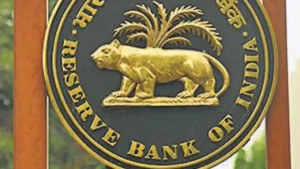Effective July 15, 2025, State Bank of India Credit Cards (SBI Cards) will implement a revised formula to calculate the Minimum Amount Due (MAD). This is the amount that a cardholder is mandatorily required to pay by the due date to keep their account in good standing. The new approach is likely to lead to higher MAD payments for users with revolving credit card debt, as it emphasizes full settlement of finance charges, fees, and other dues, rather than allowing them to accumulate.
Understanding Minimum Amount Due (MAD)
The Minimum Amount Due (MAD) is the smallest payment a credit card user must make to avoid penalties and ensure their credit card account remains active and non-delinquent. While it provides temporary relief from having to repay the entire outstanding balance, paying only the MAD will result in accruing interest and extending the debt over a very long period.
Why SBI Cards Changed the MAD Formula
The revised MAD formula aims to:
- Increase transparency in billing
- Prevent the compounding of unpaid finance charges
- Encourage better repayment discipline among users
- Reduce the risk of evergreening credit card debt, where older dues remain unpaid and continue accruing interest
What Is Revolving Credit Card Debt?
Revolving debt refers to the outstanding balance on a credit card that a user chooses not to repay in full. Instead, they pay a part of it (often the MAD) and carry the remainder into the next billing cycle. This results in:
- Accumulation of interest charges
- Long-term debt burden
- Reduced credit score over time if not managed properly
New MAD Formula Effective from July 15, 2025
SBI Cards has published a new formula that segregates each payment component. The MAD will now be calculated as:
New MAD Components:
- 100% of GST
- 100% of EMI amount (if any)
- 100% of fees/charges
- 100% of finance charges
- Any overlimit amount
- 2% of the remaining retail balance outstanding
This new formula ensures that charges and fees are fully paid off every month, reducing the possibility of these charges being carried forward and compounding.
Revised Order of Payment Settlement
Starting July 15, 2025, all payments made by the cardholder will be allocated in the following order:
- 100% of GST
- 100% of EMI amount
- 100% of fees and charges
- 100% of finance charges
- Balance transfer
- Retail spends
- Cash advance
This revised order ensures that the most critical and interest-generating components are settled first.
Comparison: New vs Old MAD Calculation
Sample Scenario:
- Retail Purchase Balance: ₹1,34,999.60
- Finance Charge: ₹11,972.18
- Fees & Charges: ₹2,700
- GST: ₹2,640.99
- EMI: ₹0
- Overlimit Amount: ₹0
New MAD (from July 15, 2025):
- 100% of GST: ₹2,640.99
- 100% of Fees/Charges: ₹2,700
- 100% of Finance Charges: ₹11,972.18
- 2% of Remaining Balance (2% of ₹1,34,999.60): ₹2,699.99
- Total MAD: ₹20,013.16
Old MAD (prior to July 15, 2025):
In the earlier system, MAD was either:
-
5% of the sum of (Finance Charge + Retail Spends + Cash Advance), or
If this was less than the Finance Charges, then it included:
- 100% of Finance Charges
- 100% of Fees
- 100% of GST
- Any Overlimit Amount
Hence:
- GST: ₹2,640.99
- Fees/Charges: ₹2,700
- Finance Charges: ₹11,972.18
- Total MAD: ₹17,313.17
Difference: The new MAD is higher by ₹2,699.99 due to the 2% charge on the remaining outstanding balance, which was not included in the earlier model.
Understanding Finance Charges on Credit Cards
Finance charges are the interest levied on outstanding balances that are not paid in full. Typically, this is:
- Around 3% per month, or 36–40% annually
- Calculated on a daily basis and applied monthly
Example:
If your outstanding is ₹10,000 and your finance charge is 3% monthly:
-
You’ll pay ₹300 as finance charge for the month
Earlier, you might’ve paid just 5% of the total outstanding, and some portion of finance charges might remain unpaid, leading to compounding. Now, 100% of finance charges must be cleared, making the debt cycle more manageable.



 IDFC FIRST Bank Launches ‘Zero-Forex Dia...
IDFC FIRST Bank Launches ‘Zero-Forex Dia...
 Axis Bank Launches 'Safety Centre' to Bo...
Axis Bank Launches 'Safety Centre' to Bo...
 RBI Proposes 75% Cap on Banks Dividend P...
RBI Proposes 75% Cap on Banks Dividend P...







